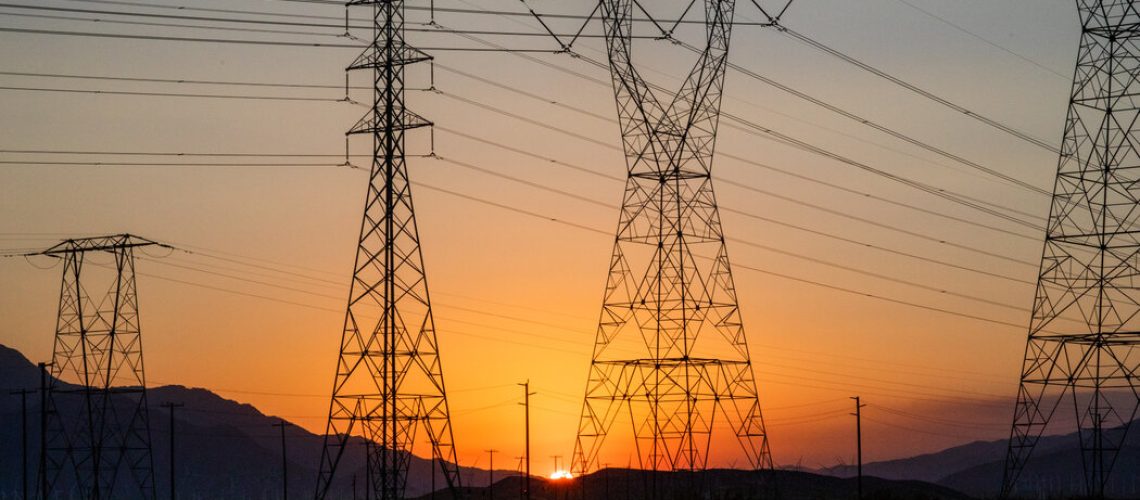Last April, I traveled to Maine to report on a stalled effort to bring clean hydropower from Canada to New England. Mistrustful residents had sued to block the 145-mile transmission line.
The project, known as New England Clean Energy Connect, finally overcame its legal hurdles this summer. More than a year after my story ran, construction is beginning again. But because of the delays, the project is now expected to cost $1.5 billion, up 50 percent from its original price tag.
The story of the NECEC is emblematic of the broader problems bedeviling American electricity grids. The Biden administration announced plans Monday to spend $1.3 billion to help build power lines across six states.
It’s not nearly enough.
“It’s a trillion dollar-plus problem,” said my colleague Brad Plumer. “It’s such a massive challenge that’s going to require states, utilities and private investors to get on board, a bunch of rule changes, and most likely federal regulators.”
Unless the U.S. and other developed countries reinvent their electricity grids, the revolution in clean energy that has given us radically cheaper solar and wind power will be for naught. The clean energy will have nowhere to go.
Point A to Point B
It’s easy to lose sight of the importance of the grid, and just how much work needs to be done.
Solar panels and wind turbines are coming online at a record pace, and clean energy is getting cheaper and more reliable than ever before.
But clean power sources are often situated far from cities where the most people live. That means new transmission lines are needed. Building them is arduous and expensive, and often faces local opposition. And yet without a huge amount of new power lines, the United States is going to have a very tough time meeting its clean energy goals. The Department of Energy says the nation’s vast network of transmission lines may need to expand by two-thirds or more by 2035.
In addition to building new lines, there’s also the challenge of improving existing grids. As Brad has reported, the boom in clean energy ventures has also overwhelmed the system for connecting new power sources to homes and businesses. More than 8,100 energy projects — the vast majority of them wind, solar and batteries — were waiting for permission to connect to electric grids at the end of 2021, up from 5,600 the year before.
“Sometimes you have existing lines where they are basically at capacity, they’re full and they can’t handle adding more wind power or solar power,” Brad said. “Or sometimes the networks can’t handle a bunch of people plugging in their electric vehicles all at once, so they need to be upgraded.”
To make matters even more difficult, there is no single U.S. electric grid. Instead, there are there are three major grids, further divided into a patchwork of operators with competing interests.
“It’s divided up and Balkanized into regional grid operators and utilities,” Brad said. “That often makes it very hard to build connection between these regions.”
And the transmission problem is global. The International Energy Agency sees a need for roughly 50 million miles of new or upgraded power lines by 2040 if countries want to meet their clean-energy goals. That’s equivalent to nearly doubling the size of the world’s existing electric grids in just two decades.
A gusher of money
The new money allocated by the Biden administration will help construct three large power lines across six states. It’s part of a gusher of money being spent on efforts to bolster the grid and get it ready for the clean energy future.
That big outlay suggests that the administration understands the importance of upgrading the grid, and is willing to spend real capital and political capital to make it happen.
Because without a better grid, Biden’s ambitious emissions reductions goals could be out of reach.
“If we have to put a lot of this new renewable energy in suboptimal places because we don’t have the grid, that means higher costs,” Brad said. “But it could also be that a lot of clean energy just can’t get built, and then we end up relying more on the gas plants and coal plants that we already have, which would make the climate goals pretty difficult, if not impossible to achieve.”
The 1.5℃ window is closing
Five years and change.
That’s how long humans can keep pumping carbon into the atmosphere at our current rate before we’re likely to push global warming past the most ambitious limit set by the Paris Agreement, according to new estimates released yesterday by a team of climate scientists.
The calculations add weight to a dismal conclusion that many researchers have already accepted: We are cutting emissions far too slowly to have much hope of keeping warming below 1.5 degrees Celsius, or 2.7 Fahrenheit, compared to preindustrial levels. That’s the threshold beyond which scientists say the likelihood of climate catastrophes significantly increases. Already, human activity has raised average global temperatures by about 1.2 degrees Celsius.
The most promising paths for avoiding 1.5 degrees are clearly gone, Joeri Rogelj, a climate scientist at Imperial College London who worked on the new projections, said at a news briefing. “And they have been gone for a while, to be honest,” he added.
Even so, having an up-to-date picture of emissions and warming can still help governments figure out how to meet less ambitious climate goals, including the Paris pact’s second-best limit of 2 degrees Celsius. Every extra increment of warming increases the risk of dangerous heat waves, floods, crop failures, species extinctions and wildfires.
— Raymond Zhong
Read the full story here.






